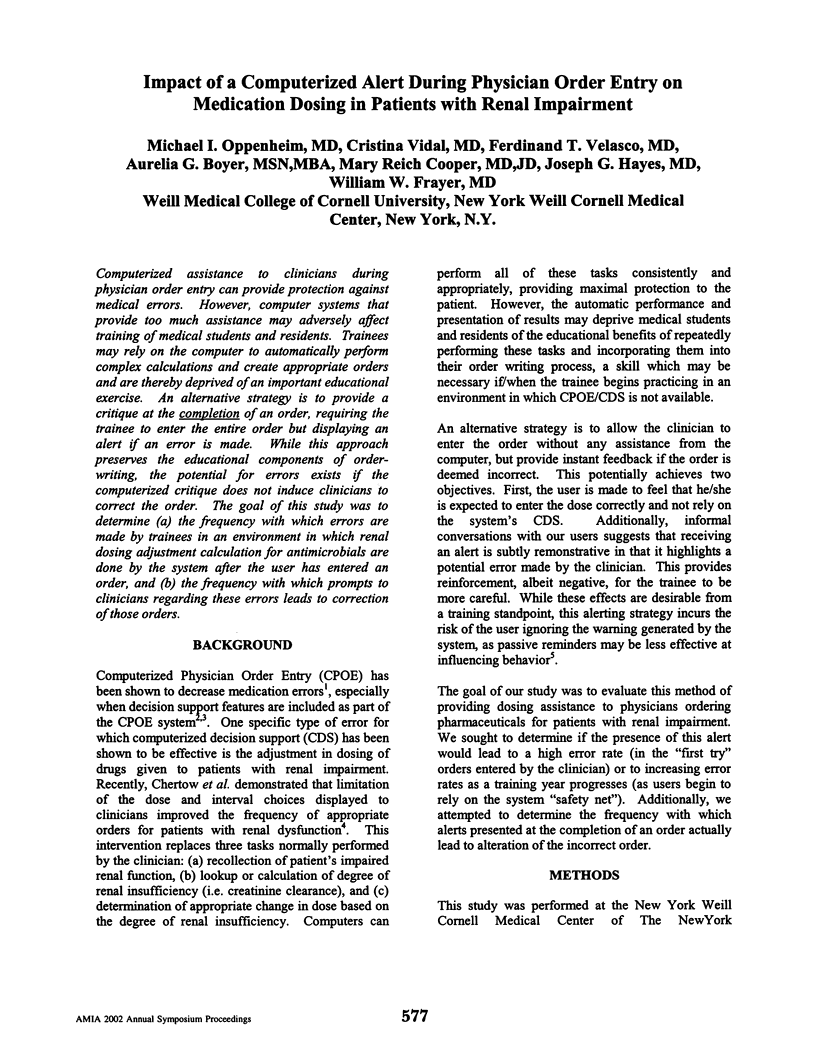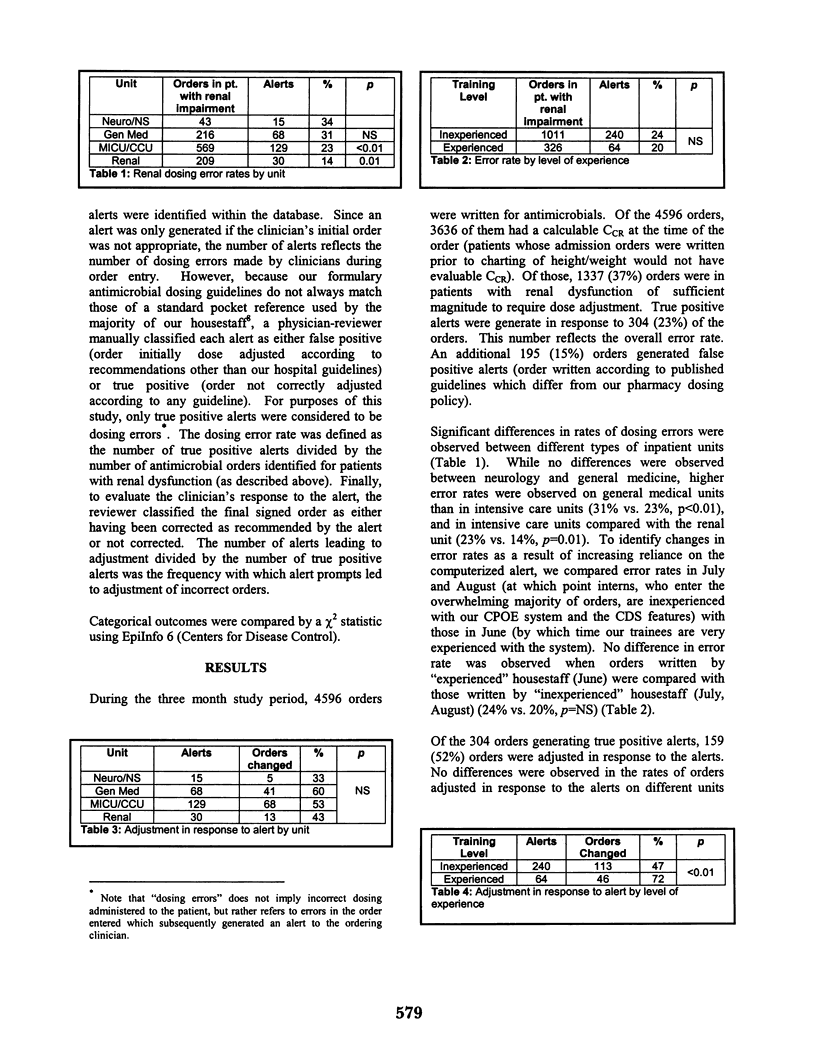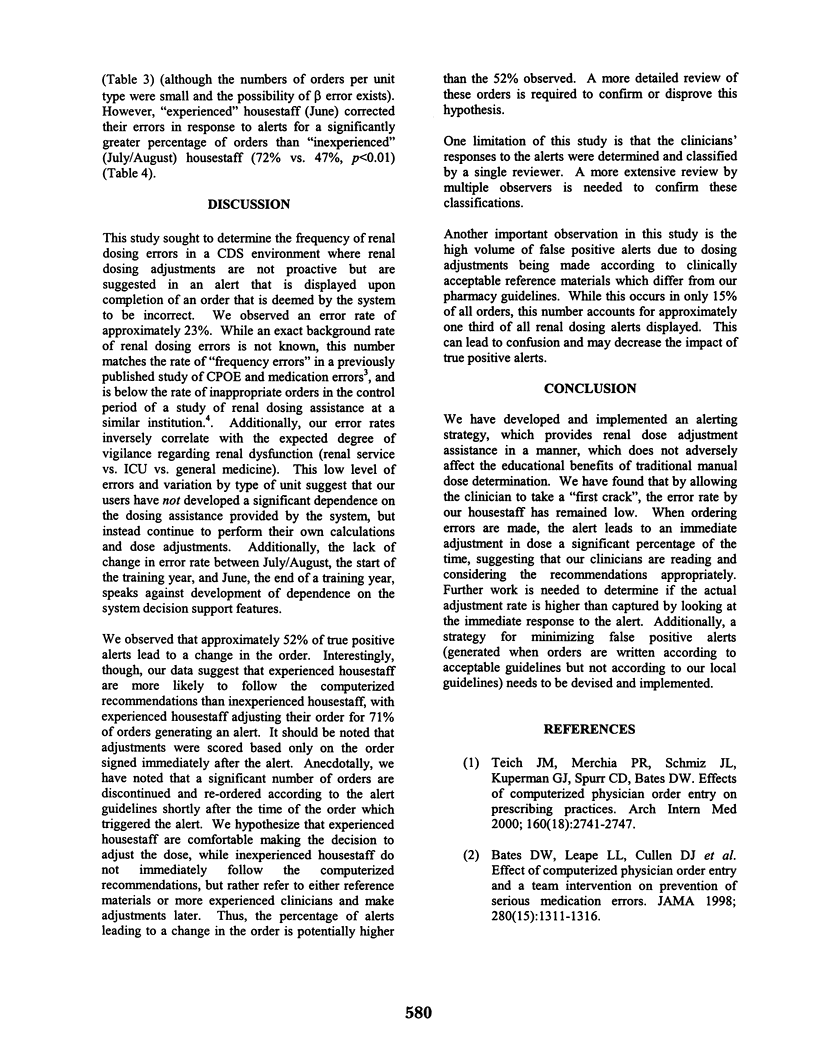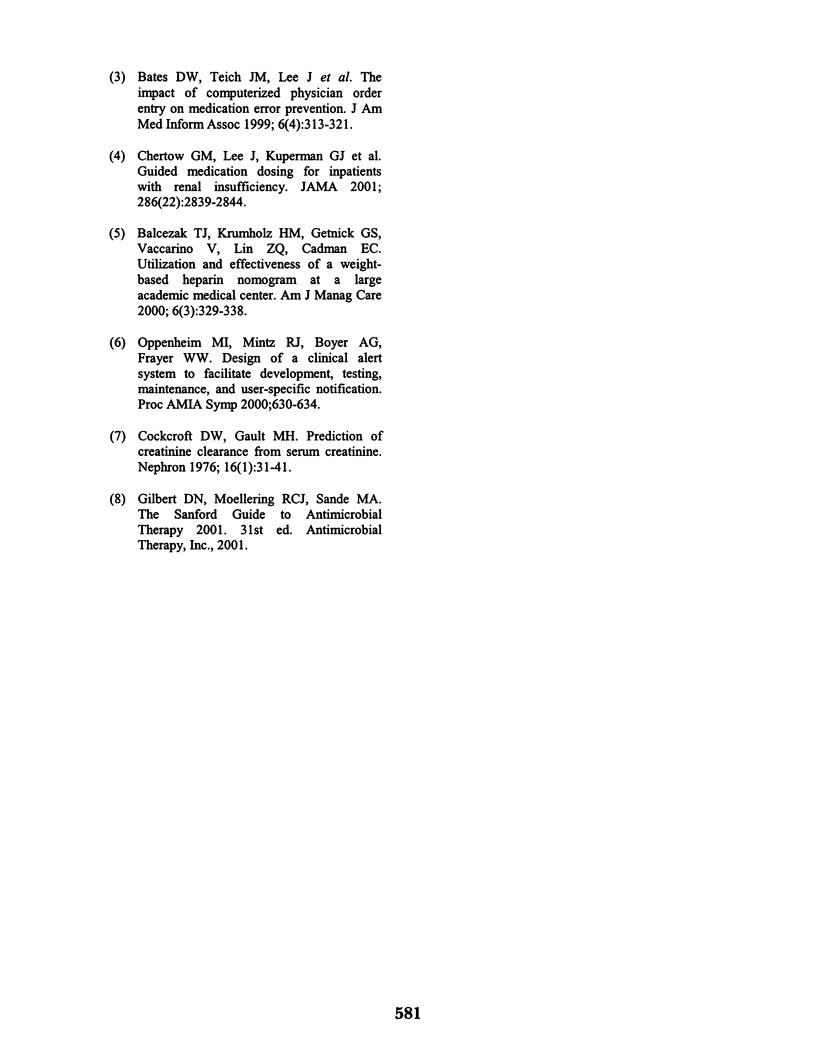Abstract
Computerized assistance to clinicians during physician order entry can provide protection against medical errors. However, computer systems that provide too much assistance may adversely affect training of medical students and residents. Trainees may rely on the computer to automatically perform complex calculations and create appropriate orders and are thereby deprived of an important educational exercise. An alternative strategy is to provide a critique at the completion of an order, requiring the trainee to enter the entire order but displaying an alert if an error is made. While this approach preserves the educational components of order-writing, the potential for errors exists if the computerized critique does not induce clinicians to correct the order. The goal of this study was to determine (a) the frequency with which errors are made by trainees in an environment in which renal dosing adjustment calculation for antimicrobials are done by the system after the user has entered an order, and (b) the frequency with which prompts to clinicians regarding these errors leads to correction of those orders.
Full text
PDF




Selected References
These references are in PubMed. This may not be the complete list of references from this article.
- Balcezak T. J., Krumholz H. M., Getnick G. S., Vaccarino V., Lin Z. Q., Cadman E. C. Utilization and effectiveness of a weight-based heparin nomogram at a large academic medical center. Am J Manag Care. 2000 Mar;6(3):329–338. [PubMed] [Google Scholar]
- Bates D. W., Leape L. L., Cullen D. J., Laird N., Petersen L. A., Teich J. M., Burdick E., Hickey M., Kleefield S., Shea B. Effect of computerized physician order entry and a team intervention on prevention of serious medication errors. JAMA. 1998 Oct 21;280(15):1311–1316. doi: 10.1001/jama.280.15.1311. [DOI] [PubMed] [Google Scholar]
- Bates D. W., Teich J. M., Lee J., Seger D., Kuperman G. J., Ma'Luf N., Boyle D., Leape L. The impact of computerized physician order entry on medication error prevention. J Am Med Inform Assoc. 1999 Jul-Aug;6(4):313–321. doi: 10.1136/jamia.1999.00660313. [DOI] [PMC free article] [PubMed] [Google Scholar]
- Chertow G. M., Lee J., Kuperman G. J., Burdick E., Horsky J., Seger D. L., Lee R., Mekala A., Song J., Komaroff A. L. Guided medication dosing for inpatients with renal insufficiency. JAMA. 2001 Dec 12;286(22):2839–2844. doi: 10.1001/jama.286.22.2839. [DOI] [PubMed] [Google Scholar]
- Cockcroft D. W., Gault M. H. Prediction of creatinine clearance from serum creatinine. Nephron. 1976;16(1):31–41. doi: 10.1159/000180580. [DOI] [PubMed] [Google Scholar]
- Oppenheim M. I., Mintz R. J., Boyer A. G., Frayer W. W. Design of a clinical alert system to facilitate development, testing, maintenance, and user-specific notification. Proc AMIA Symp. 2000:630–634. [PMC free article] [PubMed] [Google Scholar]
- Teich J. M., Merchia P. R., Schmiz J. L., Kuperman G. J., Spurr C. D., Bates D. W. Effects of computerized physician order entry on prescribing practices. Arch Intern Med. 2000 Oct 9;160(18):2741–2747. doi: 10.1001/archinte.160.18.2741. [DOI] [PubMed] [Google Scholar]


